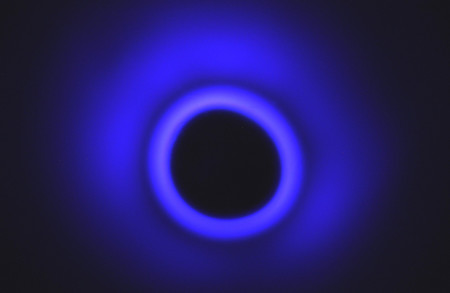For the first time, engineers at Caltech have created a stable ring of plasma in open air—essentially capturing lightning in a bottle, but without the bottle.
One of the four states of matter, a plasma is an ionized gas of electrons, protons and atoms which coexist and move coherently like a fluid. They occur naturally as lightening, stars, the interstellar medium, auroras, the atmospheres of planets etc. In fact, there is little matter in the Universe which does not exist in the plasma state – which is not surprising given the fact that the Universe initially consisted of an ionized hydrogen plasma.
Atoms are normally electrically neutral, and therefore a gas generally consists of uncharged particles. It is only when sufficient energy is given to a gas that ionization can take place – that is when atoms and/or molecules loose or gain an electron to form an ion with a negative or positive charge. In this plasma state they are electrically charged, and become highly electrically conductive such that the plasma can be accelerated and controlled by electric and magnetic fields.
These characteristics make plasmas highly desirable in numerous applications such as fluorescent lights, material synthesis, power systems, display systems etc. However, manmade plasmas typically need a containing device in the form of vacuum chambers or electromagnetic fields.
Now for the first time a team of scientists, headed by Morteza (Mory) Gharib of Caltech, have created a stable plasma ring in open air using just a stream of water and a crystal plate.
They did this by striking a crystal plate with an 85-micron sized stream of water at an impact velocity of about 1000 feet per second. This caused a lot of friction at the shear region, triggering a high flow of electrons – known as the triboelectric effect. The flow of electrons through the water ionized the surrounding atoms and molecules creating a stable glowing plasma – in the shape of a torus!
This is extremely interesting as not only could this new phenomenon be utilized in energy storage devices, medical applications etc., it as well allows us to explore a whole new understanding in physics – how do these plasma states maintain stability with no containing device? Why do they form a torus shape?
Source: Resonance Science Foundation

































Leave a Comment
You must be logged in to post a comment.